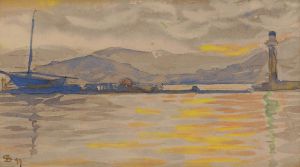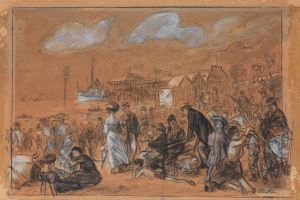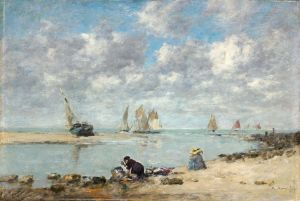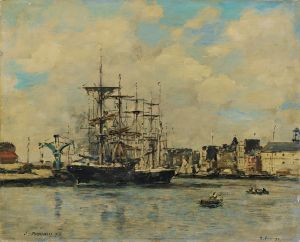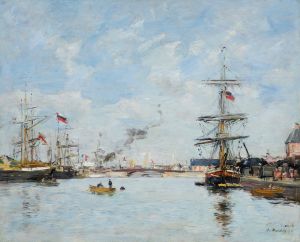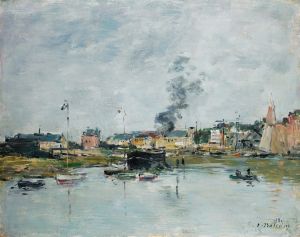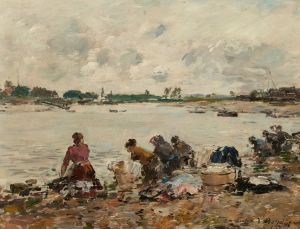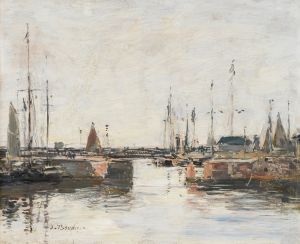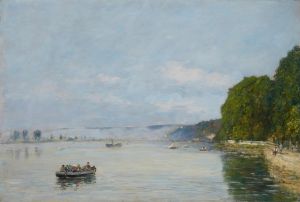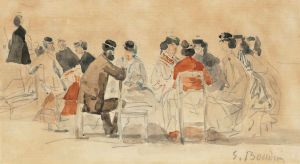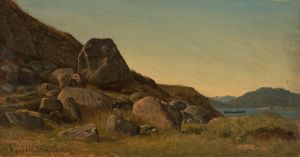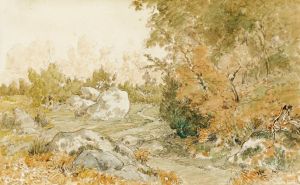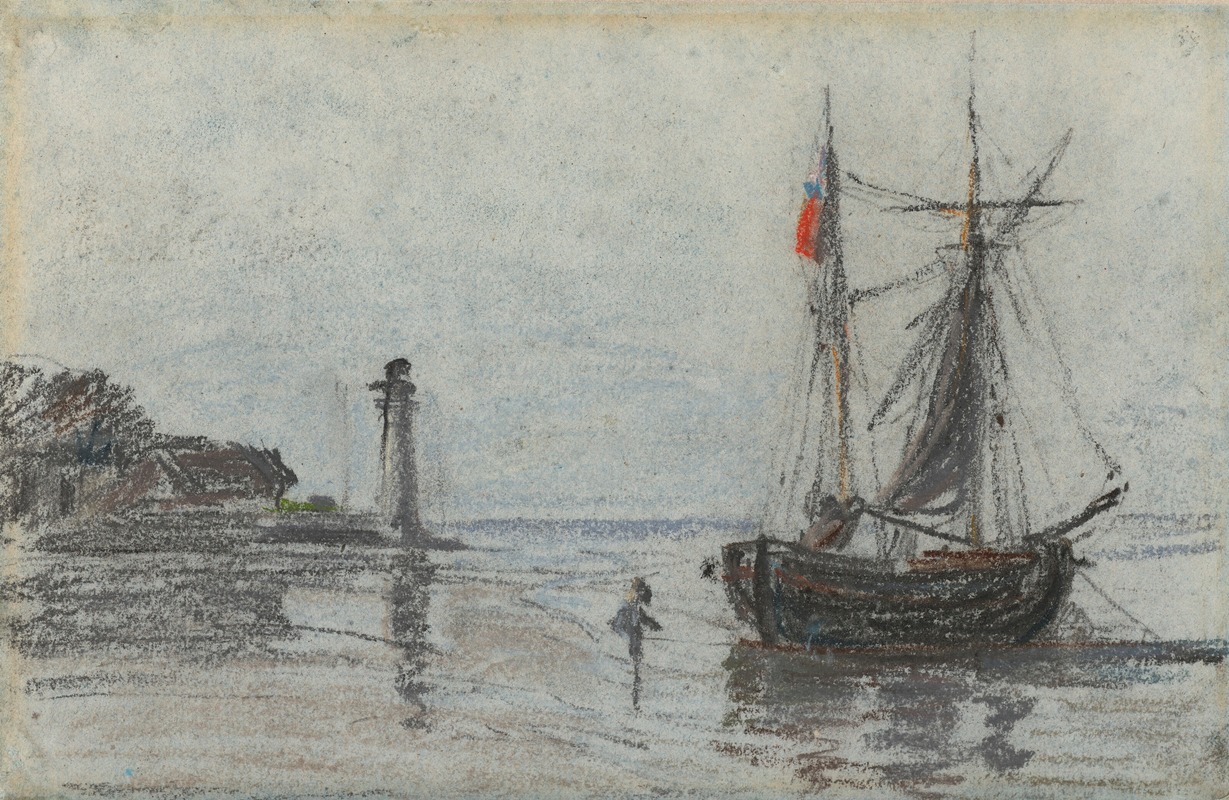
Rade, environs d’Honfleur
A hand-painted replica of Eugène Boudin’s masterpiece Rade, environs d’Honfleur, meticulously crafted by professional artists to capture the true essence of the original. Each piece is created with museum-quality canvas and rare mineral pigments, carefully painted by experienced artists with delicate brushstrokes and rich, layered colors to perfectly recreate the texture of the original artwork. Unlike machine-printed reproductions, this hand-painted version brings the painting to life, infused with the artist’s emotions and skill in every stroke. Whether for personal collection or home decoration, it instantly elevates the artistic atmosphere of any space.
"Rade, environs d’Honfleur" is a painting by the French artist Eugène Boudin, who is widely recognized for his seascapes and beach scenes. Boudin was born on July 12, 1824, in Honfleur, a port town in Normandy, France, and he became one of the forerunners of the Impressionist movement. His work is characterized by its light, airy quality and his adept use of color to capture the transient effects of light and atmosphere.
The painting "Rade, environs d’Honfleur" depicts a coastal scene near Honfleur, showcasing Boudin's deep connection to his birthplace and his fascination with maritime subjects. The term "rade" refers to a roadstead, a place outside a harbor where ships can anchor safely. This setting allowed Boudin to explore the interplay between sea, sky, and the activities of people and vessels in a naturalistic manner.
Boudin's technique involved painting en plein air (outdoors), which was relatively innovative at the time and later became a hallmark of the Impressionist movement. This approach enabled him to capture the fleeting effects of light and weather with immediacy and freshness. In "Rade, environs d’Honfleur," Boudin's brushwork is loose and fluid, effectively conveying the movement of clouds and water. His palette is typically composed of soft, muted tones that reflect the natural light of the Normandy coast.
Throughout his career, Boudin was influenced by the Barbizon School, which emphasized painting nature directly from life. He was also a mentor and friend to Claude Monet, who would go on to become one of the leading figures of Impressionism. Boudin's encouragement and example were instrumental in Monet's development as an artist.
"Rade, environs d’Honfleur" exemplifies Boudin's ability to depict the serene yet dynamic environment of the French coastline. The painting captures a moment in time, with boats gently bobbing on the water and the sky filled with billowing clouds. This sense of temporality and the focus on natural light are key elements that link Boudin's work to the broader Impressionist movement, even though he is often considered a precursor rather than a central figure of the movement.
Eugène Boudin's works are held in high esteem and can be found in major museums around the world, including the Musée d'Orsay in Paris and the National Gallery of Art in Washington, D.C. "Rade, environs d’Honfleur" is a testament to his skill in capturing the essence of the coastal landscape and his contribution to the evolution of modern art.
Boudin passed away on August 8, 1898, in Deauville, France, but his legacy lives on through his evocative and atmospheric paintings that continue to inspire and captivate audiences.





